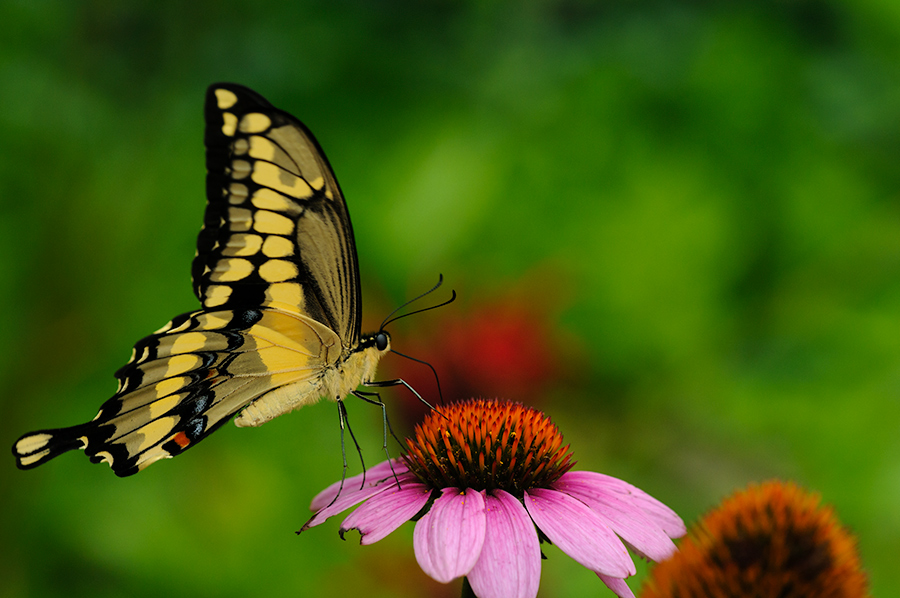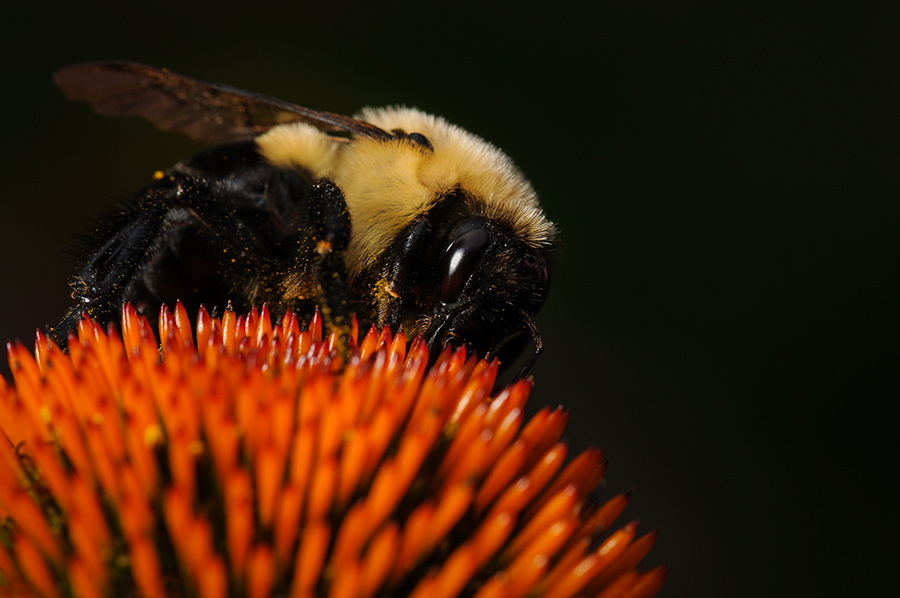
I believe we have one of the loveliest summers so far, at least during the nine years since I live here in Iowa. Due to the rain in spring and early summer everything looks lush and green and wildflowers bloom wherever a piece of land is left in a natural state. I complained a little while ago that we didn't have many butterflies this year. It's true, some species have not shown up so far but now we have at least several swallowtails in the yard as soon the sun comes out. I hope you may agree, a Giant Swallowtail on top of a Purple Coneflower tells a great story about a wonderful summer...

The swallowtails are not the only insects that get attracted by the coneflowers. Bees, wasps, or Bumble Bees, like the one in this image, enjoy the food this flower provides. I use the Nikon SB600 speedlight together with my self-made softbox to fill in some light and overcome harsh shadows. The speedlight is mounted on a tripod and connected to the camera with a Nikon SC-28 spiral cable. (If you like to see how this softbox looks like, feel free to click HERE. The link opens in an older post where I introduced this useful piece of equipment.) In order to follow the fast moving insects the camera is handhold and I have of course to stay within the range of the cable. It is important to have the flash off camera because of the short distance between your lens and the subject. I usually concentrate on one group of flowers so I don't have to reposition the speedlight all the time. It spills enough light even if it is not always 100% directed to the flower with the insect of interest. Using the cable allows me to take full advantage of the TTL-capabilities of the flashlight. Are there better ways to shoot close-ups or macros? Of course, there is a lot of gear for macro photography available but for someone like me, who shoots it only occasionally, it doesn't make sense to invest in more expensive light solutions. The way I do it works for me and the important thing is anyway to go out, make the click, and have fun shooting the signs of a great summer...





